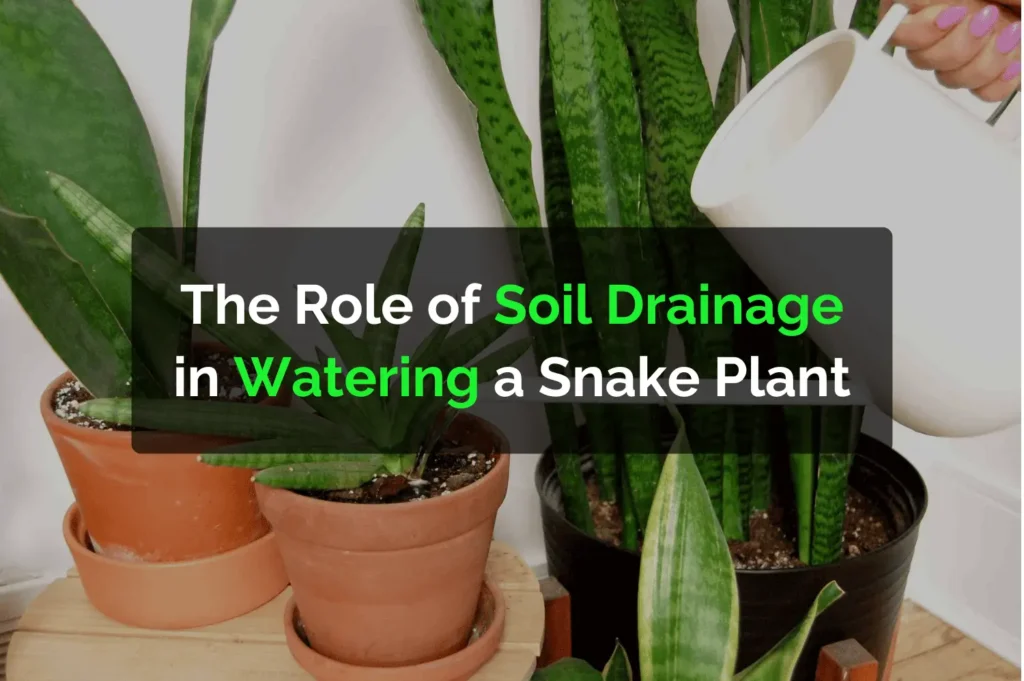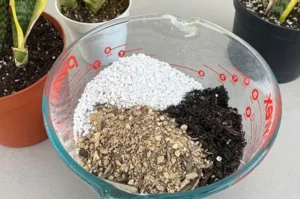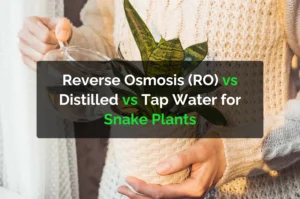Soil drainage is vital for snake plants because it prevents water from sitting around the roots, which can cause rot. Well-draining soil lets excess water escape, helping the plant stay healthy and avoid overwatering issues.
Why Soil Drainage Matters
Snake plants (Sansevieria) are popular for their low-maintenance nature and air-purifying abilities. However, one of the most common mistakes plant owners make is overwatering—often due to poor soil drainage. Ensuring good drainage is key to keeping your snake plant healthy, preventing root rot, and promoting strong growth.
What is Soil Drainage?
Soil drainage refers to how efficiently excess water moves through and out of the soil. Well-draining soil allows water to reach the roots while ensuring they don’t sit in moisture for too long.
Snake plants are native to dry regions and prefer soil that mimics their natural environment—fast-draining and dry.
Effects of Poor Drainage on Snake Plants
When the soil does not drain properly, water accumulates at the bottom of the pot. This can lead to:
- Root rot: Roots become mushy and brown due to lack of oxygen.
- Yellowing leaves: A sign that the roots are damaged.
- Stunted growth: Without healthy roots, the plant cannot grow properly.
- Plant death: If left in soggy soil for too long, the snake plant may not survive.
Choosing the Right Soil for Drainage
To ensure proper drainage, use a well-aerated soil mix. You can:
- Mix regular potting soil with sand, perlite, or pumice.
- Use cactus or succulent soil, which is designed to drain quickly.
Best Soil Mix for Snake Plants:
- 2 parts potting soil
- 1 part perlite or pumice
- 1 part coarse sand
This combination keeps the soil light and breathable, preventing water from sitting around the roots.
The Role of Pots and Drainage Holes
Even with the right soil, choosing the right pot is crucial.
- Always choose pots with drainage holes at the bottom. These holes allow excess water to escape, reducing the risk of overwatering.
- Avoid decorative pots without drainage holes, or use them only as covers for a draining pot.
- For extra protection, add a layer of gravel or small stones at the bottom of the pot to help water drain out more easily.
How to Water Your Snake Plant Correctly
Once you have well-draining soil and the right pot, watering becomes much easier.
- Water only when the soil is dry: Check the top two inches of soil; if dry, it’s time to water.
- Water deeply but infrequently: Let the water soak through the soil and drain out the bottom.
- Adjust based on seasons:
- In summer, water every two to three weeks.
- In winter, watering once a month is usually enough.
Signs of Overwatering vs. Underwatering
| Condition | Signs of Overwatering | Signs of Underwatering |
|---|---|---|
| Leaves | Yellow, soft, mushy | Dry, wrinkled, curling |
| Roots | Brown, mushy, smells bad | Dry, brittle |
| Soil | Stays wet for days, drains slowly | Completely dry, pulling away from the pot |
Frequently Asked Questions (FAQs):
Can I use regular garden soil for my snake plant?
It’s not recommended. Garden soil holds too much water and may contain pests. Use a well-draining mix instead.
What happens if I overwater a snake plant just once?
One overwatering isn’t usually harmful, especially with good drainage. Just make sure the soil dries out before watering again.
How can I tell if my soil drains well?
After watering, the excess should drain out within a few seconds to a minute. If the water pools or drains slowly, the soil may need amending.
Conclusion
Proper soil drainage is essential for a healthy snake plant. It prevents water from collecting around the roots and protects your plant from diseases like root rot. By choosing the right soil mix, using pots with drainage holes, and following smart watering practices, you’ll ensure your snake plant thrives in your home.






